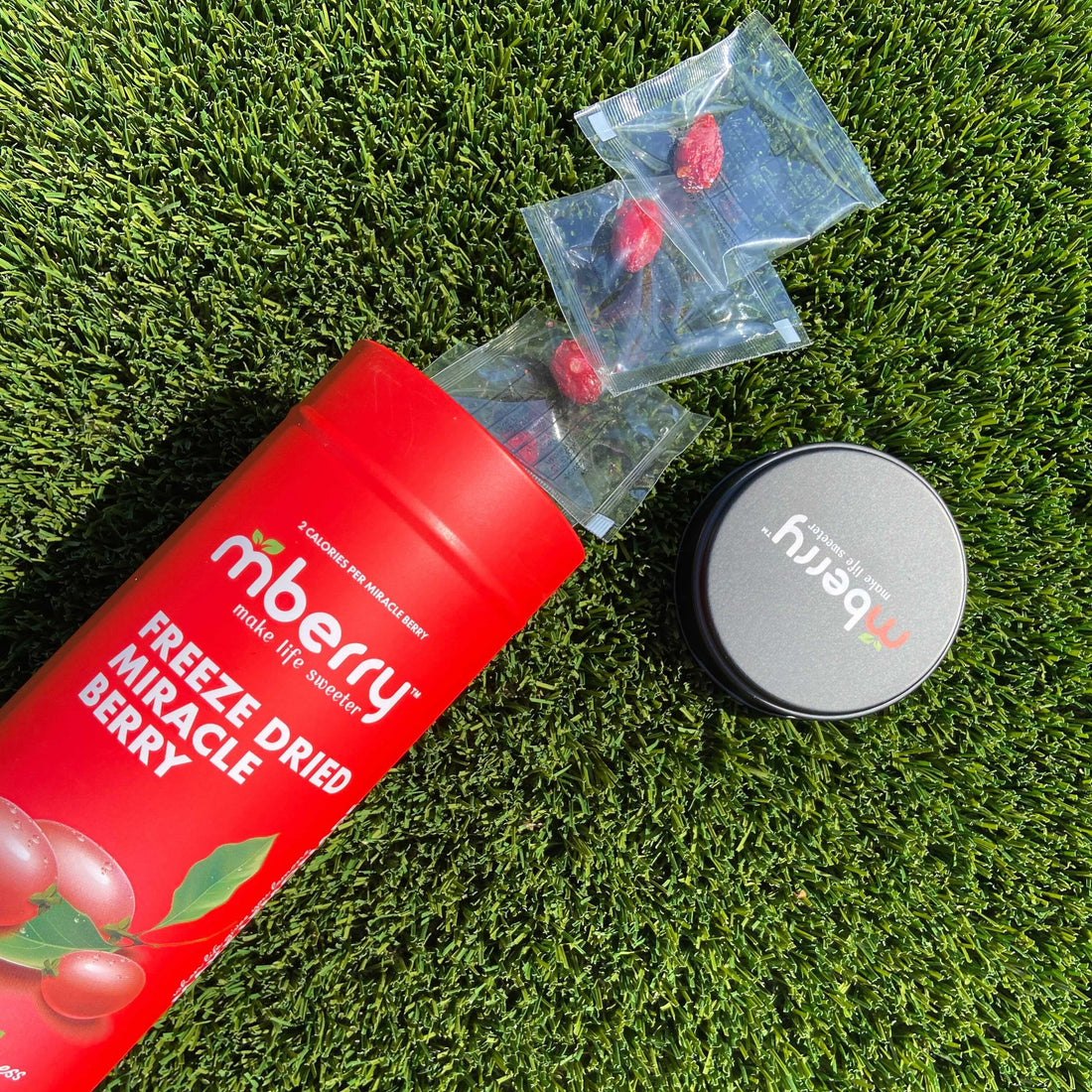Exploring Miraculin and the Miracle Fruit Phenomenon
In the late 1960s, two pioneering researchers successfully unveiled the miraculous protein hidden within the exotic miracle fruit, aptly named Miraculin. While Miraculin itself isn't sweet, it possesses an extraordinary talent – it can magically transform sour tastes into delectable sweetness on your palate.
Fast forward to 2006, and Japanese researcher Kenzo Kurihara accomplished a groundbreaking feat by infusing Miraculin into everyday foods like lettuce and tomatoes. Astonishingly, just two grams of lettuce were equivalent to the Miraculin content found in a single Miracle Fruit.
Navigating the Legal Landscape
In 1974, the FDA imposed a ban on incorporating Synsepalum Dulcificum, the scientific name for miracle fruit, as an ingredient in foods. To clarify, mixing Miraculin into food products to create healthier, low-calorie, and low-sugar alternatives is against the law. Miraculin can only be used as a standalone ingredient unless explicitly stated otherwise. Notably, the FDA permits the importation of Miracle Fruit (specifically Miraculin) only in freeze-dried and tablet forms.
However, you can buy plants, cookbooks, and other variations right here!
Curiously, you might ponder, "Why isn't a fruit with centuries of safe consumption recognized as generally safe?" In the 1970s, a company seeking expansion in the food market introduced Miracle Fruit popsicles to Boston schoolchildren. Strangely, following this, the founders experienced surveillance, office raids, and the subsequent FDA ban on Miraculin. Coincidence? We'll leave it to your judgment.
Thankfully, Miraculin remains available as a candy, though, as of December 2021, it awaited official Generally Recognized as Safe (GRAS) status from the FDA.
In 2021, Miraculin achieved Novel Food approval status for Synsepalum Dulcificum in the EU, permitting its use as an ingredient in food supplements, signifying its safety for European consumers.
Visit out FAQ for more information
Miraculin Unleashed: Japan and Beyond
Japan stands as a haven for Miraculin enthusiasts, with no restrictions on its production or sale. Back in 2005, the "Miracle Fruit Cafe" delighted patrons with a cornucopia of culinary delights, all enhanced by the magic of the miracle fruit. From tangy curries to decadent parfaits, ice cream, yogurt, and beyond, the miracle fruit revolutionized the way people experienced their favorite flavors, offering a healthier twist.The Miraculous Science Behind It All
So, how does Miraculin work its enchantment? When you indulge in a miracle berry, the glycoprotein known as Miraculin unfurls a metaphorical "sweetness blanket" over your taste buds. Unlike standard proteins, glycoproteins contain carbohydrates alongside carbon, hydrogen, and oxygen.
Now, let's dive into the science. When your tongue's pH hovers around neutrality (between 6.2 and 7.6), Miraculin cleverly binds to your sweet taste bud receptors (hT1R2-hT1R3). In this role, it acts as an antagonist, remaining dormant and not activating your taste buds. However, Miraculin dons the hat of an agonist when other flavors grace your tongue. It tricks your brain into perceiving these flavors as intensely sweet, effectively rewiring your taste perception.
For instance, when you savor acidic foods like lemons, the Miraculin blanket subtly shifts around your receptor (hT1R2), enhancing sweetness via its agonist function. In the absence of food, Miraculin acts as an antagonist and remains relatively tasteless. Sour foods, on the other hand, induce shifts in the Miraculin molecule's shape and the surrounding taste buds, heightening the sweetness.
Bear in mind that the Miraculin experience varies from person to person due to factors such as Miraculin dosage, tongue contact time, and food acidity. It's advisable to keep Miraculin (or a Miracle Fruit Tablet) on your tongue for at least three minutes to fully engage your taste buds. This enchanting effect gradually dissipates as your tongue returns to neutrality or when you consume hot beverages, as high temperatures can deactivate Miraculin. It's important to note that this magical protein cannot withstand high-temperature cooking.
For recipes on how to use miracle fruit in cooking, we have recipes here. From safe and common to the outrageous!
Unveiling the Hidden Benefits of Miracle Fruit
In West Africa, every part of the miracle fruit finds purpose, from the berries and leaves to the roots and bark. Each component plays a unique role in traditional medicine among locals. For example, the leaves offer a means to manage weight and diabetes, while the branches of the miracle fruit plant can serve as a surprisingly effective toothbrush – a truly fascinating revelation!
Want to give Miraculin a try? Luckily, you can find all things Miraculin on our store

